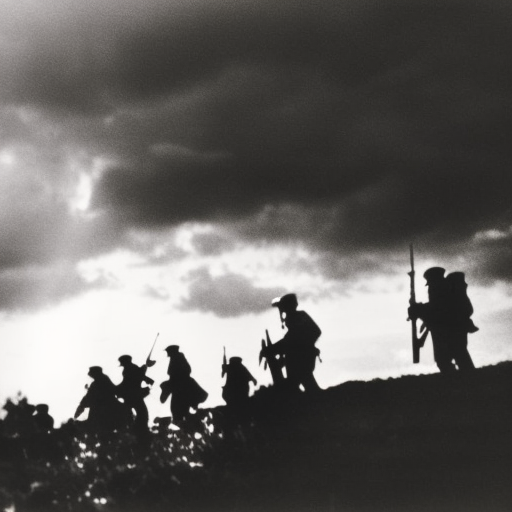Battle of the Lys: A Decisive World War I Battle on the Western Front
The Battle of the Lys was a major engagement that took place on the Western Front during World War I. It occurred from April 7 to April 29, 1918, and was part of the German Spring Offensive, also known as the Kaiserschlacht. The battle was fought between German forces, led by General Erich Ludendorff, and British, Portuguese, and Belgian forces under the command of General Sir Douglas Haig.
Background:
By 1918, the war had reached a stalemate on the Western Front, with both sides entrenched in a series of fortified positions. The German High Command, hoping to achieve a decisive victory before the arrival of American troops, launched a series of offensives in the spring of 1918. The Battle of the Lys was one such offensive, aimed at breaking through the Allied lines and capturing the strategic city of Ypres in Belgium.
The German Offensive:
The German offensive began on April 9, 1918, with a massive artillery bombardment along the Lys River. This was followed by a series of infantry assaults, supported by tanks and aircraft. The initial German assault was successful, and they quickly captured several key positions along the front.
Allied Counterattacks:
Despite the initial success, the Allied forces quickly regrouped and launched a series of counterattacks. British and Portuguese troops, supported by French reinforcements, fought fiercely to regain lost ground. The Allies managed to slow down the German advance and prevent them from achieving their objectives.
The Portuguese Division:
One notable aspect of the Battle of the Lys was the heroic resistance of the Portuguese Expeditionary Corps. Despite being inexperienced and poorly equipped, the Portuguese soldiers held their ground against the German onslaught. They fought bravely and inflicted heavy casualties on the enemy, earning the respect of their Allied counterparts.
German Advances and Allied Retreat:
Despite the Allied counterattacks, the German forces continued to make progress. They captured the town of Armentières and pushed the Allies back towards Ypres. The British and Portuguese troops fought valiantly, but they were outnumbered and outgunned. The Germans used their superior firepower and tactical advantage to gain ground.
The Role of Gas Warfare:
During the Battle of the Lys, the Germans made extensive use of chemical weapons, particularly chlorine and mustard gas. These deadly gases caused widespread panic and forced the Allies to retreat further. The gas attacks resulted in heavy casualties and added to the chaos and confusion on the battlefield.
The End of the Battle:
By the end of April 1918, the German offensive had lost momentum. The Allied forces, though heavily battered, managed to hold the line and prevent a complete breakthrough. The Battle of the Lys ended inconclusively, with both sides suffering heavy casualties. However, the German advance had been halted, and the Allies had successfully defended Ypres.
Legacy:
The Battle of the Lys was a significant event in World War I. It demonstrated the resilience and determination of the Allied forces in the face of a powerful German offensive. The battle also highlighted the devastating impact of gas warfare and the need for improved protective measures. The Portuguese soldiers’ bravery and sacrifice became a source of national pride for Portugal.
In conclusion, the Battle of the Lys was a major engagement during World War I that took place on the Western Front. It was part of the German Spring Offensive and involved intense fighting between German and Allied forces. Despite initial German successes, the Allies managed to slow down the enemy advance and prevent the capture of Ypres. The battle highlighted the use of gas warfare and the bravery of the Portuguese soldiers. Ultimately, the Battle of the Lys ended inconclusively but marked a turning point in the war.












